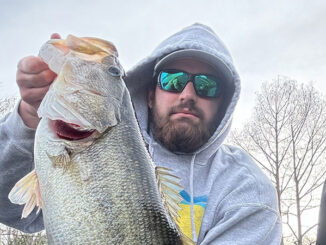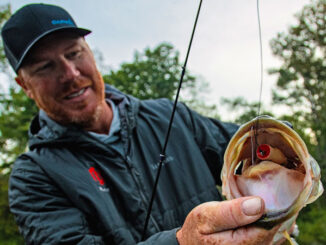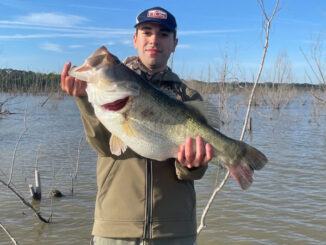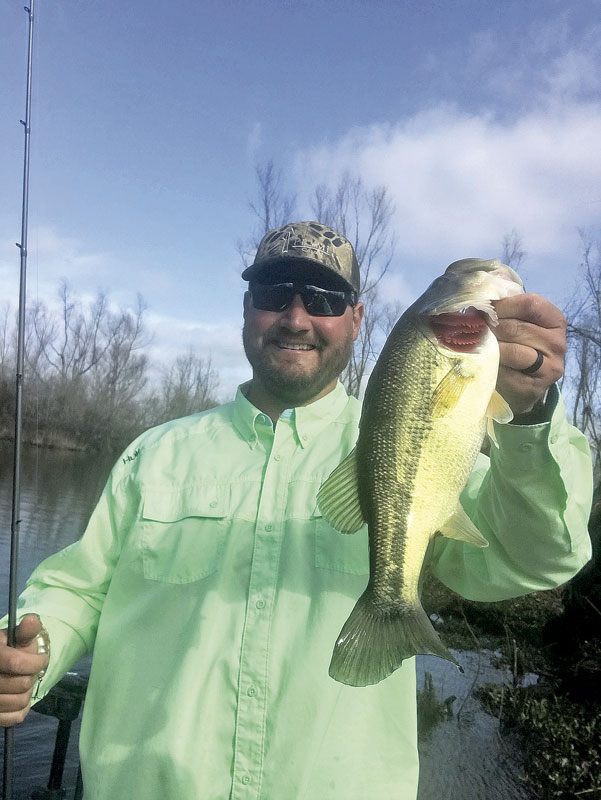
Cliff Crochet was getting his jabs in, sticking bass here and there on Lake Fork during the first two rounds of the Major League Fishing Bass Pro Tour event in February in Texas.
And just when he needed it, Crochet’s one-two punch gave him a few extra bass to send him on to the Knockout Round. These angling tactics are used instinctively by some bass anglers, but those who don’t may want to try out one-two punches and see for themselves.
The Pierre Part pro bass angler was getting bites flippin’ an area with stumps, deadfalls and branches with a NetBait B Bug under a ¼-ounce worm weight. The soft plastic creature bait glided in the water, more or less glancing off the wood.
When the bite slacked off on that lure, Crochet switched to a heavier ¾-ounce worm weight (½-ounce also works in this scenario) because it gives a different presentation.
“Flippin’ a ¼-ounce weight glides more,” Crochet said. “A bigger weight, like a ¼-ounce or ¾-ounce, sticks more, gives more of a vertical presentation. It falls different, hops different, stays in contact with the bottom. You get more hits on a piece of cover.
“When I’d go to a heavier weight, I’d drop it again so it hops over a branch or root, dropping the rod tip to give it slack so it will not pendulum.”
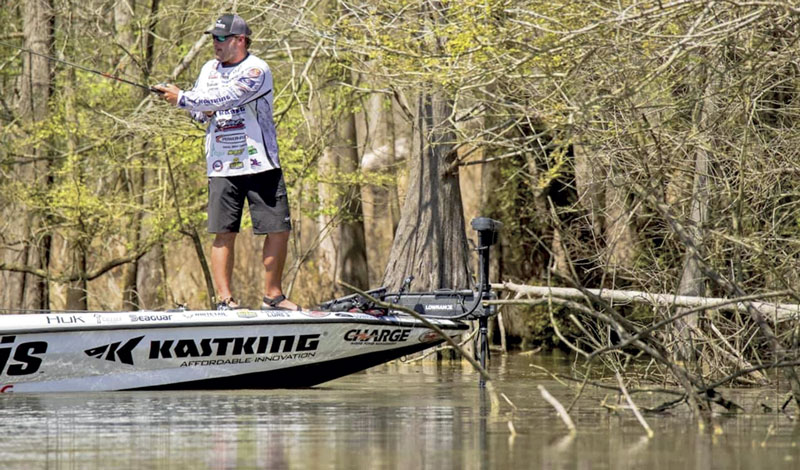
Extra bites
The technique is simple. He yo-yo’d the soft plastic under a heavier weight with the rod tip at 10 o’clock, lifted it to 1 or 2 o’clock to get it over cover, then quickly lowered the rop tip to 7 o’clock to avoid lure swinging away from the cover.
“That got the extra bites to put me into the Knockout Round,” he said. Those are also the kind of “extra bites” that can make the difference in a poor and a good everyday fishing trip.
That one-two punch paid off. It had more to do with terminal tackle, while his other changeups center around artificial lures or approaches. They can be as subtle as exchanging a crankbait from round to flat-sided, or changing the retrieve on a square-billed crankbait, such a Bill Lewis SB-57, from steady to stop-and- go, or covering water already fished from a different angle and direction to double your coverage.
Mostly, Crochet confided, it’s coming back through an area known to have bass with a different artificial lure. He has plenty of examples of one-two punches that work for him.
One of his first successful one-two punch techniques has helped him for many years. One he remembers well is in the late 1990’s when he was fishing a local Friday evening tournament out of Bayside Tackle at Lake Verret. He was buzz baiting the last 20-40 minutes as another competitor worked his way from the opposite direction, also chunking a buzz bait.
“I knew the fish already saw a buzz bait,” he said. “Just a couple minutes later, I caught on a spinnerbait.”
Crochet has been sold on that strategy ever since, all the while finding good combinations.
“I think every good fisherman does it,” he said about swinging some variation of a one-two punch.
“The whole deal is you have to have a backup plan to get a bite. It’s always one-two … What’s next in line to give me a bite or two, to extend this pattern? I’m not trying to rewrite the book. I’m trying to change it up a bit to get one more bite,” he added, noting it’s all about boosting confidence as well.
He emphasized the tactic is for “once you find the deal,” i.e., find bass.
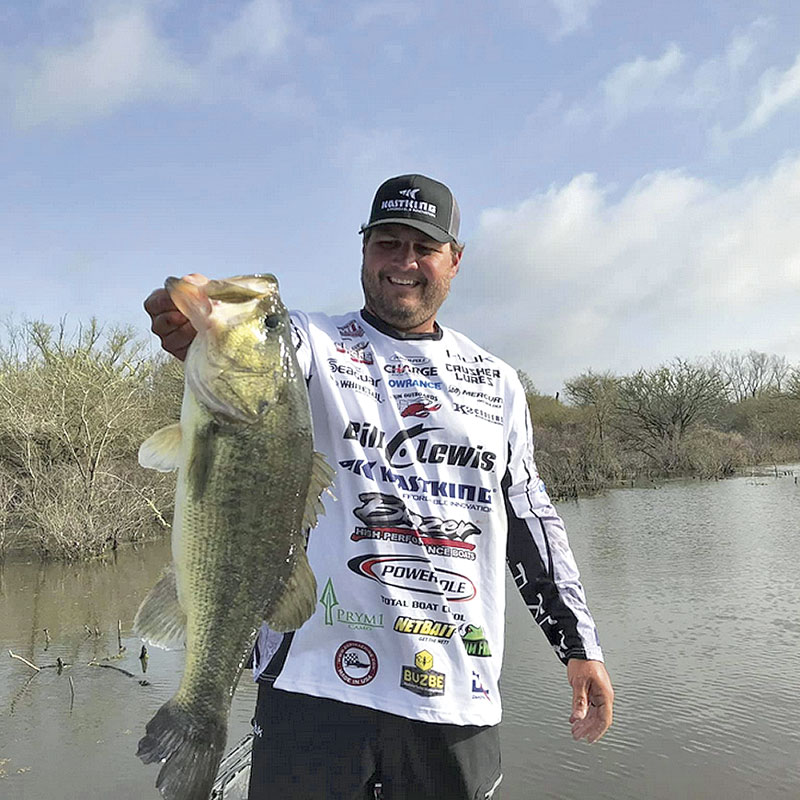
The bait and switch
“Whatever the pattern is, there’s always a spinoff off it,” Crochet said. It helps to get the most out of an area the bass angler has found bass.
“The big deal around home, everywhere, really, especially around the house, like switching from a Stanley Ribbit to a Zoom Horny Toad,” he said. “Like you’re catching good on a Ribbit, then they’re not biting as good. Come back with a Horny Toad with its different feet and get a few more bites off it.
“You know what else is good, too? Like catching on a Rogue. They quit biting that … then throw a NetBait Spike.”
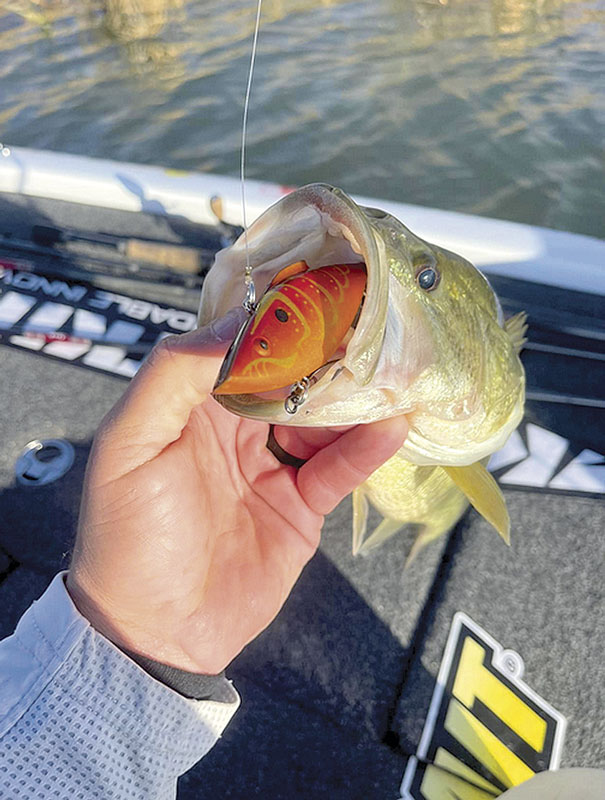
Giving bass another look
There are all kinds of combination and every angler has his favorites. Some are formed by success over the years. Others are formed just out of a thought that maybe something else will work. Here are some or Crochets’ go-to combos:
- Crusher Lures 3/8-ounce Pro Buzz buzz bait to a 3/8-ounce Crusher Lures Cliff Crochet Petite Spinnerbait.
- From froggin’ to flippin’ … “I’m talking about open water, cypress trees,” he said. “If bass stop hitting the plastic frog, get out of the topwater mode, and flip a NetBait B Bug or NetBait Poc-A-Craw. Drop it on their face, they’ll eat it.”
- “A chatterbait’s a big deal,” Crochet said. “Here’s when you one-two punch. It works really well in two-day tournaments, a one-day tournament or just fishing. Say you’re throwing a spinnerbait. First pass down the bank, and say you catch six. They all crushed it. Down in their mouth. Say the next pass they get off it a little bit. Don’t drill it. A chatterbait gives the fish a different look.”
Crochet said to come back with something different, like a Crusher Lures Grass Assassin Jig, fished like a swim jig to trigger bass after a spinnerbait.
- “I will tell you this, I’ve seen this, especially at home in the Atchafalaya Basin or Lake Verret,” he said. “Anytime you’re shallow water fishing – 4-foot or less – going down the bank with a spinnerbait, that deal like a ¼-ounce Rat-L-Trap is a mop-up behind all of that. You can throw it and get reaction bites.”
Crochet did just that in late April 2018 during a Bassmaster Elite Series tournament at Grand Lake of the Cherokees to finish 12th with 58 pounds, 5 ounces. He was catching on a spinnerbait the first few days and ended up catching on a ¼-ounce Trap.
Bass anglers can mix and match their own one-two punch tactics to boat more bass, according to Crochet.
